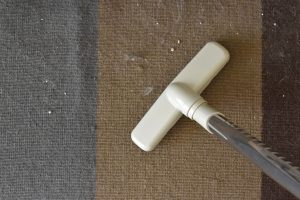Finding the perfect litter option for your cat can be a difficult task. One common question to arise is this: does clumping litter last longer than non-clumping? After some significant research, we've found a definite answer to provide some clarity for cat owners.
Clumping litter does last longer than non-clumping litter. In most cases, cat owners can go at least three weeks without entirely changing out a litter box filled with clumping litter. But this quality doesn't make it the end-all option for cats, as some felines prefer non-clumping litters.
Of course, this answer does offer a bit of vagueness about whether clumping or non-clumping is better. We'll dive into each's pros/cons below to provide a better idea of what fits your cat's needs. Let's make sure the next litter purchase is ideally suited for your needs.
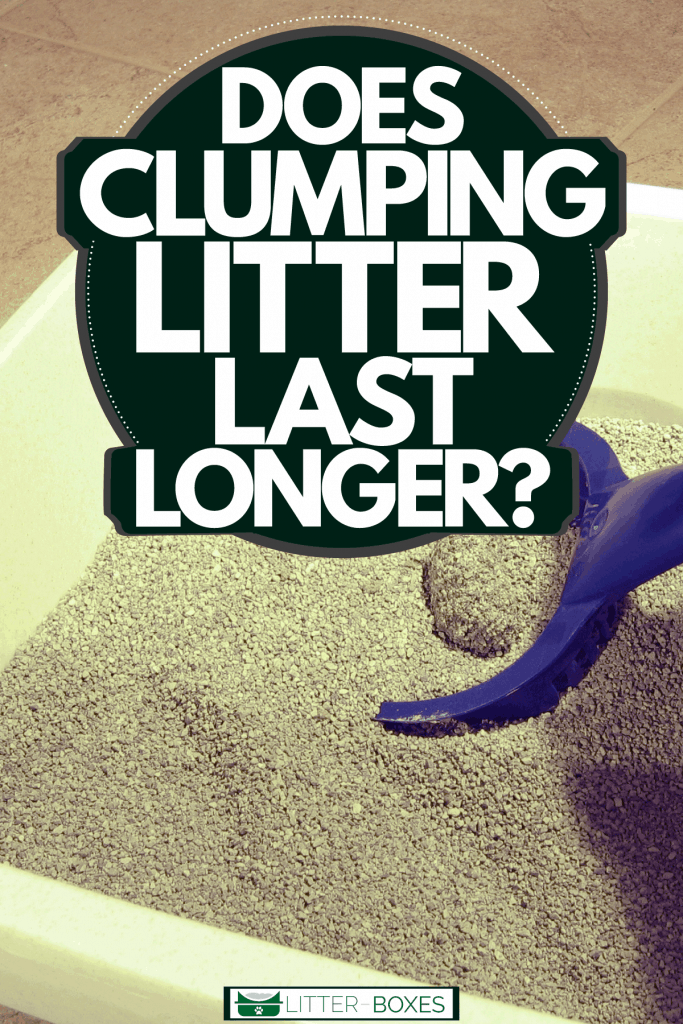
What's the Best Litter Option for Cats? [Clumping Vs. Non-Clumping]
The perfect litter can make your cat's life a lot easier when on their bathroom visits. It's time to figure whether your cat's more of a clumping or non-clumping type of feline.
Clumping Cat Litter Pros
The first thing to know about clumping cat litters is they exist for one specific purpose. It allows owners to easily remove both urine and feces from the box without emptying the entire container.
In other words, it's a rather convenient way of managing a litter box. Most clumping options offer this benefit by containing a material called bentonite.
It's an essential component as it allows the litter to form a solid clump as it absorbs liquid. Moreover, there are also alternative all-natural fibers to help the cat litter clump further tightly.
After the litter clumps together, owners can proceed to remove it from their litter box. It doesn't take much effort, either, as you grab your trusted poop scooper and scoop out the solid litter. You then leave some clean litter in its place to provide a fresher atmosphere for the next cat bathroom break.
This ability to scoop and replace soiled litter ensures the box remains cleaner longer. As a result, clumping litter ends up having an advantage over non-clumping for lasting longer.

How Long does clumping cat litter last?
Aside from clumping litter's longevity inside the box, most of these options don't have expiration dates. So it allows users to keep them as long as they want until the container's empty.
The product will last to the point where your household doesn't require it anymore or needs a new batch.
How often should clumping litter be changed?
In an ideal scenario, owners should clean their clumping cat litter twice a day. After that, it's just a simple act of removing the poop or clumps, which takes only a minute of your time.
Complete changes are an every 3-to-4 week activity to keep your cat's litter box fresh and usable. It's an essential part of keeping your cat comfortable and happy with their bathroom area.
Clumping Cat Litter Cons
One of the main issues with clumping litters is their price tags. These options often cost more than most other types of litter available. Of course, clumping litter will point to it being offset by it lasting longer, but it's still worth acknowledging.
Another issue is clumping litter produces a lot more dust than non-clumping. It could arise when you're filling the box or when your cat gets a little too rowdy when using it.
This dust can then irritate asthma and cause respiratory issues in a cat or human. Moreover, the silica dust found in these litters is considered a potential carcinogen when inhaled.
Clumping cat litter is also not meant for usage with kittens. These younger felines might become curious about the litter, lick it from paws, and swallow it. Sadly, the clumping litter may then swell in a kitten's intestines and cause blockages.
Owners with physical limitations might want to pass on clumping litter, as well. These litters are much heavier to lift when they're inside the package and the litter box, which could cause some issues.
Do cats prefer clumping litter?
In most situations, cats seem to prefer a clumping litter with a fine or medium texture. Another critical component of these preferred litters is that they are unscented.
But some cats like to be a little rebellious by straying from the norm and prefer non-clumping. Plus, there are some other benefits to these litters, as discussed in the next section.
Non-Clumping Litter Pros
Non-clumping litter exists to remove odors associated with cat urine. High-quality options are fantastic at eliminating those smells because they can absorb a large amount of urine without issue.
You'll come across both non-scented and scented options, as well. The scented, non-clumping litters will have additional additives like charcoal or baking soda to help control those smells.
As for the materials, non-clumping litter is often made from clay. But other types do exist, such as plant-based options like wood, corn, pine, beet pulp, and much more.
One more benefit to non-clumping cat litter is dust control. These options emit very little to ensure there are no asthma-related concerns.
People who prefer non-clumping litters cite them as being less expensive and better at dust control. In other cases, it comes down to these litters being the only ones their cat will use.
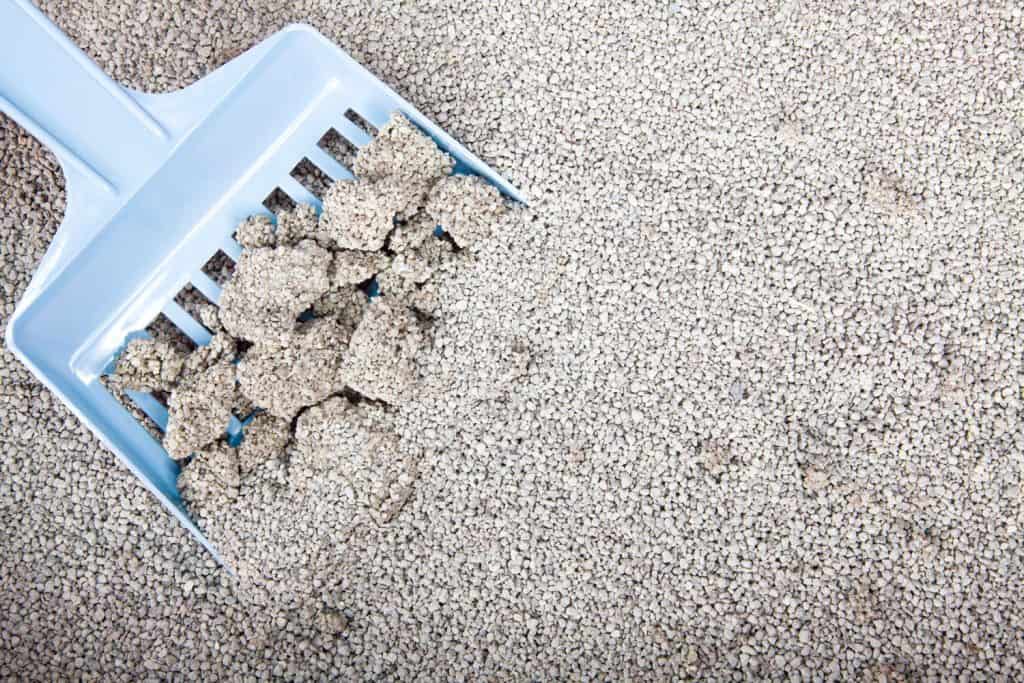
Non-Clumping Litter Cons
A non-clumping litter's main side effect is allowing urine to pool at the litter box's bottom. As you can imagine, it makes the box a whole lot more challenging to clean for owners.
It also leads to more frequent cleaning where the entire contents need dumping and replacing. Owners will be looking at doing this process at least twice a week.
Given this issue, these non-clumping litters might become less budget-friendly than expected. You end up going through a lot more product than with clumping types.
Non-clumping types offer a higher absorption rate and odor control, but the urine remains in the box. As a result, the litter box will eventually have a strong, disgusting odor after a few days.
Should I use clumping or non-clumping cat litter?
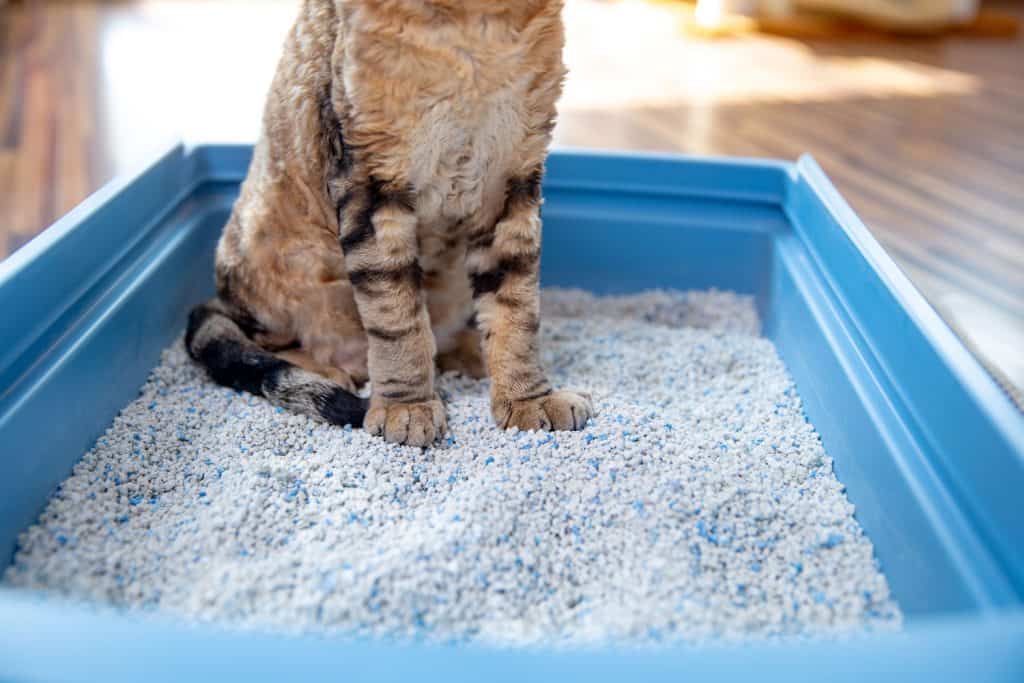
Based on the above information, this answer clearly comes down to preference. The choice between clumping or non-clumping is a personal choice that'll depend on what your cat prefers and what you can tolerate.
One thing to keep in mind is cat litter avoidance. Some cats will actively refuse to go inside their litter boxes if they don't like what's inside them.
As a result, choosing a litter that your cat prefers reduces the likelihood of this issue. It'll help prevent accidental elimination inside your home, which is something nobody wants to experience.
Owners who have a cat without a preference should then focus on their wants. For instance, anyone concerned with lessening their cleaning of litter boxes would want a clumping litter.
Meanwhile, people who want a cheaper option with better dust control would do better with non-clumping. It's these small considerations that'll help shape and determine what litter type best suits your needs.
In Closing
If you have any more questions about your cat's litter preference, please let us know in our comment section. We'll make sure to answer each post as soon as possible. Thanks for reading!

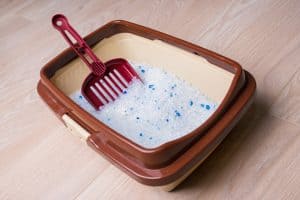
![cat examines kitty litter box with eco-friendly silicate litter - Can You Wash and Reuse Crystal Cat Litter? [Answered]](https://litter-boxes.com/wp-content/uploads/2023/08/cat-examines-kitty-litter-box-with-eco-friendly-silicate-litter-300x200.jpg)
